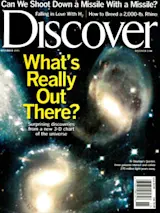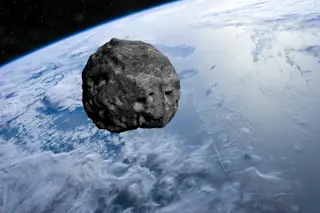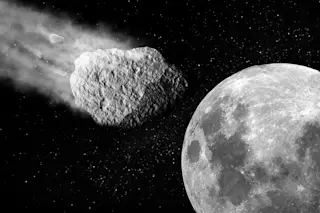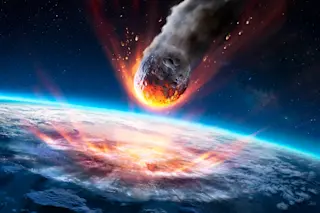Can a stone no larger than an apple seed make people gasp in amazement? Sure, when it punches through the air 70 times faster than a bullet. At such a speed, intense friction heats both the rock and the surrounding air molecules to incandescence, producing a brilliant streak. Play that again every second, and you've got a meteor storm.
In an era of mind-twisting cosmological puzzles, few astronomers have wanted to hitch their careers to the study of space debris. Yet meteors keep observatory phones ringing. This month may up the ante with one of the finest displays in decades. The annual Leonid meteor shower should escalate into a long-awaited, torrential meteor storm in the predawn hours of November 18, when those who aren't under cloud cover may see 4,000 meteors per hour. Soon after, the Geminids--the richest of the year's consistent showers--will blast Earth on December 13 and 14.
And now these blazing bits are starting to get some respect. Astronomers have come to recognize that meteors--flecks of rock shed from the evaporating ices of comets or, in rarer cases, from colliding asteroids--are unique time capsules from the formation of the solar system. Whereas planetary rocks have been corrupted by wind, rain, and geological reprocessing, meteoroids often remain much as they were 4.6 billion years ago, when Earth began to form. NASA has even dispatched a spacecraft, called Stardust, to collect meteorlike material from comet Wild 2 in 2004.
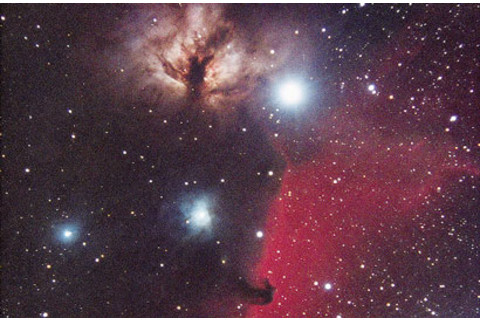
A Leonid meteor storm lit up the sky over Slovakia in 1998.Photograph Courtesy of Pavel Spurny/Ondrejov Observatory, Czech Republic.
Part of the thrill of a meteor shower is that it requires no star knowledge. Still, science sneaks in: Even casual viewers can tell November's Leonids are very different from December's Geminids. The Leonids strike our planet head-on, producing bright, lightning-fast streaks that often leave glowing trails. These scattered remnants of the comet Tempel-Tuttle usually produce only a weak shower. Every 33 years or so, however, the meteors abruptly arrive thick and furious, indicating Earth has passed through the densest parts of the comet's dusty trail. This happened in 1833 and in 1966, when an hour-long torrent of 40 meteors per second captivated and terrified onlookers in the American West.
The Geminids, being much more uniformly distributed, put on a comparatively modest but reliable show, spewing out one-a-minute meteors like a tireless vending machine. Visible from everywhere and continuing all night long, these fragments of the asteroid Phaethon will hit Earth sideways and cross the sky at just 22 miles per second, half the speed of a typical Leonid. Only 3 percent leave trails.
Meteor experts anticipate great things from the Leonids this year. Each time Tempel-Tuttle passes close to the sun, the comet disintegrates a bit and leaves behind a new stream of dust. Earth should plow right through three streams this year. The eastern United States has been favored to witness the first swarm, which could deliver a meteor every few seconds from 4 to 6 a.m. EST on November 18. Eight hours later, researchers forecast, a much denser swarm may light up eastern Asia with as many as seven meteors per second. But in a late-breaking development, meteor guru Peter Jenniskens of NASA's Ames Research Center now concludes the richest storm will occur over the United States and Canada.
The Leonid's streams are so compact that each storm lasts only about as long as a movie. That is why only those waiting at the lucky longitudes will see the incoming bullets. That is also why predicting the storm is such dicey business. Obviously, anyone with clear skies should check the heavens that night, especially before dawn. You might see the astronomical sight of a lifetime.

Sky & Telescope magazine has put together a wonderful collection of articles about the history of the Leonid meteor shower, along with abundant tips on how best to watch for shooting stars. And it's online for free: www.skypub.com/sights/ meteors/meteors.shtml.
You can compare notes with other amateurs, or even contribute some meteor observations of your own, through the American Meteor Society's Web site: www.amsmeteors.org.


